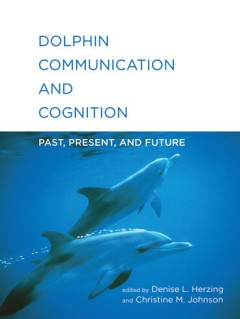Filter by

Beyond the cognitive map :from place cells to episodic memory
"A Bradford book."OCLC-licensed vendor bibliographic record.
- Edition
- -
- ISBN/ISSN
- 9780262282192
- Collation
- 1 online resource (xviii, 420 pages) :illustrations
- Series Title
- -
- Call Number
- -

Darwinian Dominion: Animal Welfare and Human Interests
The controversial subject of this book is the permissible use of animals by humans. Lewis Petrinovich argues that humans have a set of cognitive abilities, developing from a suite of emotional attachments, that make them unique among species. Although other animals can think, suffer, and have needs, the interests of members of the human species should triumph over comparable interests of member…
- Edition
- -
- ISBN/ISSN
- 9780262281515
- Collation
- 1 online resource
- Series Title
- -
- Call Number
- -

Perspectives on imitation :from neuroscience to social science.
A state-of-the-art view of imitation from leading researchers in neuroscience and brain imaging, animal and developmental psychology, primatology, ethology, philosophy, anthropology, media studies, economics, sociology, education, and law.Leading researchers across a range of disciplines provide a state-of-the-art view of imitation, integrating the latest findings and theories with reviews of s…
- Edition
- -
- ISBN/ISSN
- 9780262275958
- Collation
- 1 online resource (1 volume) :illustrations
- Series Title
- -
- Call Number
- -

Dolphin communication and cognition : past, present, and future
"Dolphin researchers have collected an impressive amount of data over the last twenty years, thanks to advances in technology for monitoring, recording, and analyzing dolphin behavior as well as increasing interest in exploring and modeling dolphins' cognitive capacities. This volume offers a comprehensive reference to the latest research on dolphin communication and cognition, reporting on fin…
- Edition
- -
- ISBN/ISSN
- 9780262331852
- Collation
- 1 online resource (xiv, 310 pages) :illustrations
- Series Title
- -
- Call Number
- -

The Welfare of Performing Animals A Historical Perspective
This timely book describes and analyses a neglected area of the history of concern for animal welfare, discussing the ends and means of the capture, transport, housing and training of performing animals, as well as the role of pressure groups, politics, the press and vested interests. It examines primary source material of considerable interdisciplinary interest, and addresses the influence of …
- Edition
- 2
- ISBN/ISSN
- 978-3-662-45834-1
- Collation
- -
- Series Title
- -
- Call Number
- -

Defending animals :finding hope on the front lines of animal protection
"A journey across the lush, complex, and uneven landscapes of animal protection reveals that the wellbeing of animals is deeply connected to the work and the wellbeing of people"--OCLC-licensed vendor bibliographic record.
- Edition
- -
- ISBN/ISSN
- 9780262375627
- Collation
- 1 online resource
- Series Title
- -
- Call Number
- -

The evolution of agency :behavioral organization from lizards to humans
"A scientific analysis of agency in the real world-which animal types have it and which don't-written by the top researcher in the field"--OCLC-licensed vendor bibliographic record.
- Edition
- -
- ISBN/ISSN
- 0262370204
- Collation
- 1 online resource.
- Series Title
- -
- Call Number
- -

Tenacious beasts :animals back from the brink
"Conventional wisdom is that wild animals are being wiped out. But conventional wisdom skips some important details. Wildlife is rebounding. Not everywhere. Not every species. But a handful of wildlife populations have reached numbers unimaginable in a century. Red deer in Europe, bison in North America, humpback whales in the Atlantic. They have all seen their populations explode. They are bac…
- Edition
- -
- ISBN/ISSN
- 9780262372558
- Collation
- 1 online resource
- Series Title
- -
- Call Number
- -

Model systems in biology :history, philosophy, and practical concerns
"Instead of arguing for a specific animal model, Striedter will review the history and philosophy of animal models in biomedical research, examining their various advantages and limitations"--OCLC-licensed vendor bibliographic record.
- Edition
- -
- ISBN/ISSN
- 9780262370028
- Collation
- 1 online resource (1 volume)
- Series Title
- -
- Call Number
- -

Born knowing :imprinting and the origins of knowledge
"Based on his decades of experience working with newborn chicks and other species, Vallortigara gives us a clear and accessible account of behaviors that are considered to be innate or instinctive"--OCLC-licensed vendor bibliographic record.
- Edition
- -
- ISBN/ISSN
- 0262365871
- Collation
- 1 online resource.
- Series Title
- -
- Call Number
- -
 Computer Science, Information & General Works
Computer Science, Information & General Works  Philosophy & Psychology
Philosophy & Psychology  Religion
Religion  Social Sciences
Social Sciences  Language
Language  Pure Science
Pure Science  Applied Sciences
Applied Sciences  Art & Recreation
Art & Recreation  Literature
Literature  History & Geography
History & Geography